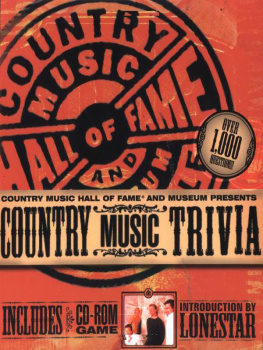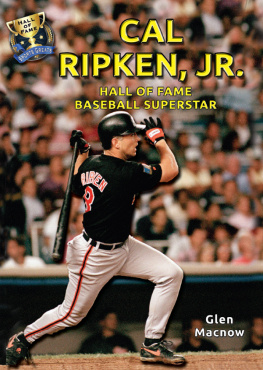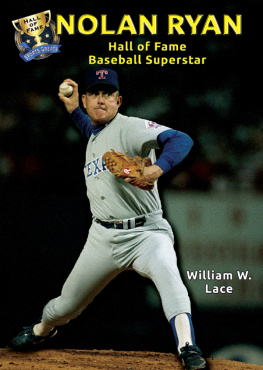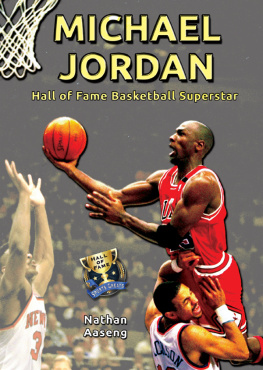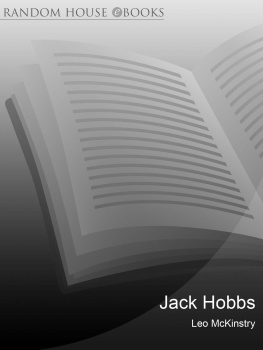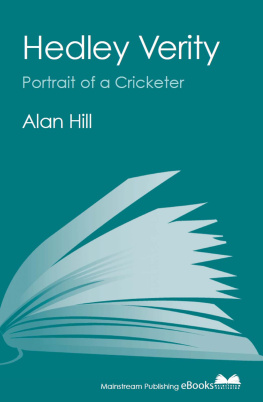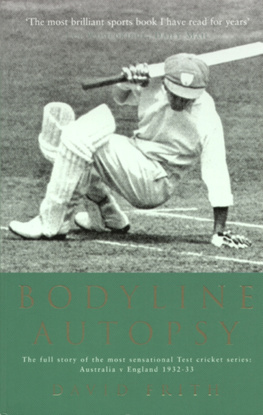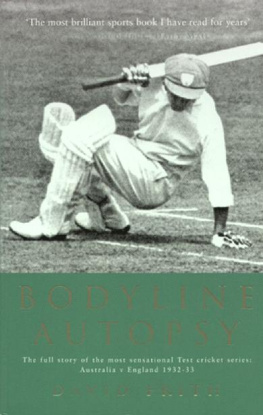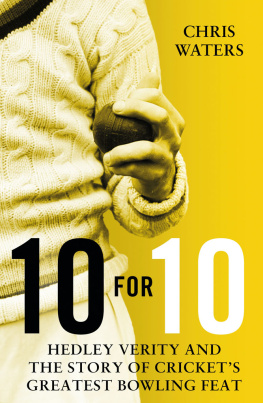Pitch Publishing
A2 Yeoman Gate
Yeoman Way
Durrington
BN13 3QZ
www.pitchpublishing.co.uk
Justin Parkinson 2013
First published in eBook format in 2013
eISBN: 978-1-909178-99-1
(Printed edition: 978-1-90917-854-0)
All rights reserved under International and Pan-American Copyright Conventions. By payment of the required fees, you have been granted the non-exclusive, non-transferable right to access and read the text of this e-book on-screen. No part of this text may be reproduced, transmitted, downloaded, decompiled, reverse-engineered, or stored in or introduced into any information storage and retrieval system, in any form or by any means, whether electronic or mechanical, now known or hereinafter invented, without the express written permission of the Publisher.
eBook Conversion by www.ebookpartnership.com
Contents
For Caroline, Iris,
Nora, Alan and Lynda
Acknowledgements
M EDIUM-FAST BOWLERS IN the 1930s and 1940s were conscious of walking in the footsteps of a giant. Writing this book provoked a similar feeling in me. The two substantial previous works on Maurice Tate were by John Arlott and Gerald Brodribb. Arlott was an inspiring figure: a poet, a campaigner, a friend to cricketers. His book on Tate, published in 1951, was among the most elegantly written on cricket. Brodribb, in his own way, was an equally fascinating character. An archaeologist, a school-owner and a prolific author, his biography, in 1976, helped to keep Tates name going.
Unlike these two men, I never had the chance to meet Tate, being born almost 18 years after his death. I have tried not to use either Arlott or Brodribb as source material. There will obviously be crossovers, but I hope my take is distinctive. I think both would be happy that someone is trying to continue their work.
I live about seven minutes walk from Tates birthplace. My early years were spent living halfway between Freds old house in Kingsbury Street and St Peters Church, where his interest in cricket was fostered. I played on The Level, just as he had done. Until recently, like those catching the bus with Tates name on it, I had no idea of the areas associations. But now, to me, if few others, this sporting father and sons memory is everywhere. They were intriguing, entertaining people and it has been a privilege to learn more about them.
The writing of this book has reminded me of just how many wonderful people are involved with the game of cricket, and my life.
I would like to thank the Tate family, including Charlotte Tate, Marcus Rootes and Christina Freeman, who were all very pleasant to deal with, much as I had expected of grandchildren of such a charming man. I hope they feel this book does his life and legacy some justice.
Sussex expert bar none Roger Packham provided a keen reading of my manuscript, and the advice and amendments he offered were gratefully accepted. He worked tirelessly and selflessly.
Ben Peers, barrister, novelist and my oldest friend, also gave the words a useful read-through. His suggestions were most welcome.
Rob Boddie, the archivist at Sussexs museum at the County Ground, has been an ever-encouraging presence. His museum is well worth a visit for anyone interested in all matters cricketing and a good chat.
Nicholas Sharp, the proud possessor of a huge collection of Sussex memorabilia, very kindly invited me into his home and gave full access to his archive, including the letters of Fred Tate. His picture collection, along with items like the ball with which Maurice broke the wickets record for an Ashes series, helped bring the story to life. He also gave me access to Gerald Brodribbs correspondence, which was very useful. I used this sparingly, but it helped to provide flavour of a time before I was born.
David Frith, a titan of cricket writing, offered this novice excellent advice on writing, publishing and research, along with access to another of Freds letters.
Rupert Webb, a star in his own right, as a player, actor and raconteur, gave me some wonderful insights into the lot of a professional cricketer and Maurice Tates personality. His knowledge of the technical aspects of the game, particularly standing up to keep wicket to quicker bowlers, was especially useful. Ruperts glamorous and charming wife Barbara was also very hospitable and made me the best cup of tea I have ever drunk. The biscuits were nice too.
Young Jim Parks was all I had hoped for in a sporting hero when I spoke to him courteous, friendly and helpful.
My friend, the journalist and author Bruce Talbot, fast becoming the Sir Home Gordon of his age, although considerably less posh or acerbic (at least in print!), was a great source of advice.
Another friend, photographer James Stan Boardman, made the effort to traipse around a damp Wadhurst graveyard looking for the resting place of Maurice. His pictures of the gravestone, the Tate Gates and the plaque commemorating the great mans birth in 1895 add a touch of artistic class to the photos section.
David Corney of St Peters CC in Brighton provided me with the clubs records from the 1890s and was thrilled to learn of its association with Fred Tate. He now includes Freds story in the pep talk he delivers to young players. Hopefully this focuses more on his career as a whole than the 1902 Old Trafford Test! Fred would have approved.
Walsall Cricket Clubs honorary secretary, Bob Whitham, provided a clear, authoritative account of Maurices brief time as a professional in the Birmingham League.
Stan Cosham, the guru of all things Wadhurst, was a kind and welcoming interviewee. His interest in his locality was infectious.
Reg Barrow, curator at the Sussex Masonic Centre, provided useful information on Tates time as a member of the South Down Lodge.
Stephen Bates, formerly of the Guardian, got me in touch with the Tates and offered excellent advice.
Thanks also to Denis Pannett for allowing me to use his mother Juliet Pannetts delightful sketch of Maurice.
Pitch Publishing, run by Paul and Jane Camillin, has been very supportive. I thank them for their backing.
The staff at the British Librarys newspaper archive at Colindale were helpful, as were those at the Brighton History Centre and the East Sussex Archive.
This whole book was made possible by my family. My father, Alan, was supportive from the start. My daughters, Iris and Nora, became two of the best-informed under-sixes in the country, maybe the world, when it came to Tate. Their shared giggling at hearing the name of the great Victor Trumper for the first time will stay with me forever.
My beautiful, talented wife, Caroline, although bombarded with cricket-related miscellanea, was encouraging throughout. She ensured I stayed focused and remained rather less tangential than tends to be my wont. Thank you.
My late mother, Lynda, was forever telling me during her sadly too-brief life that I should write a book. She will never see the fruits of her request, but she deserves eternal credit for her kindness.
Introduction
T HE WORDS ON the front of the bus screech into view. It is only a little bus, a single decker. No one really notices the number 46 as it begins its journey from Coldean to Southwick.
Yet the bus is not just a number; it has a name. Its name is Maurice Maurice Tate. The words are printed above the bumper in letters a few inches high. Unbeknown to almost all of Brighton and Hove Bus and Coach Companys customers, the bored teenagers and middle-aged women waiting on a dreary afternoon, the vehicle is proclaiming the name of one of Britains greatest sportsmen.


